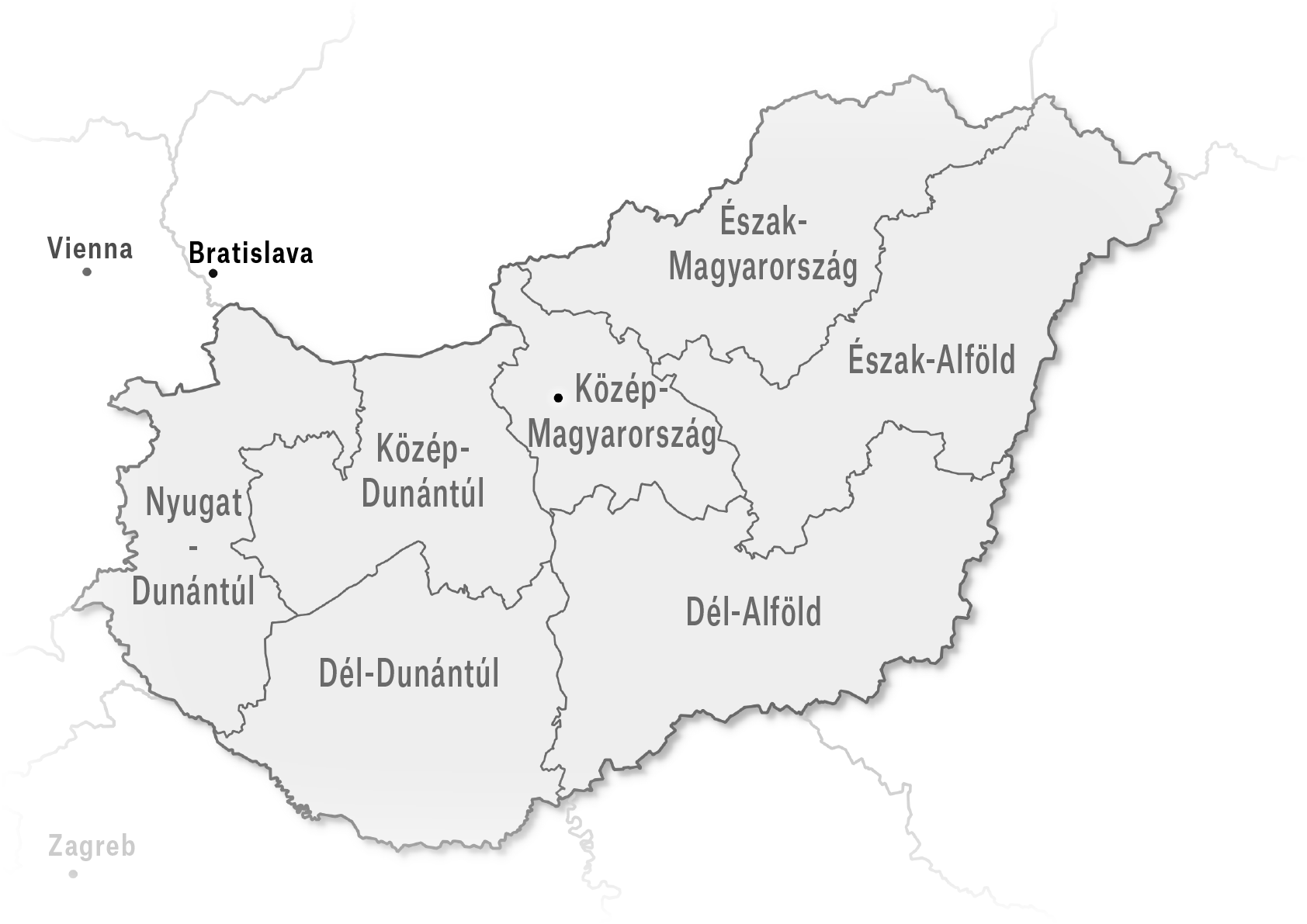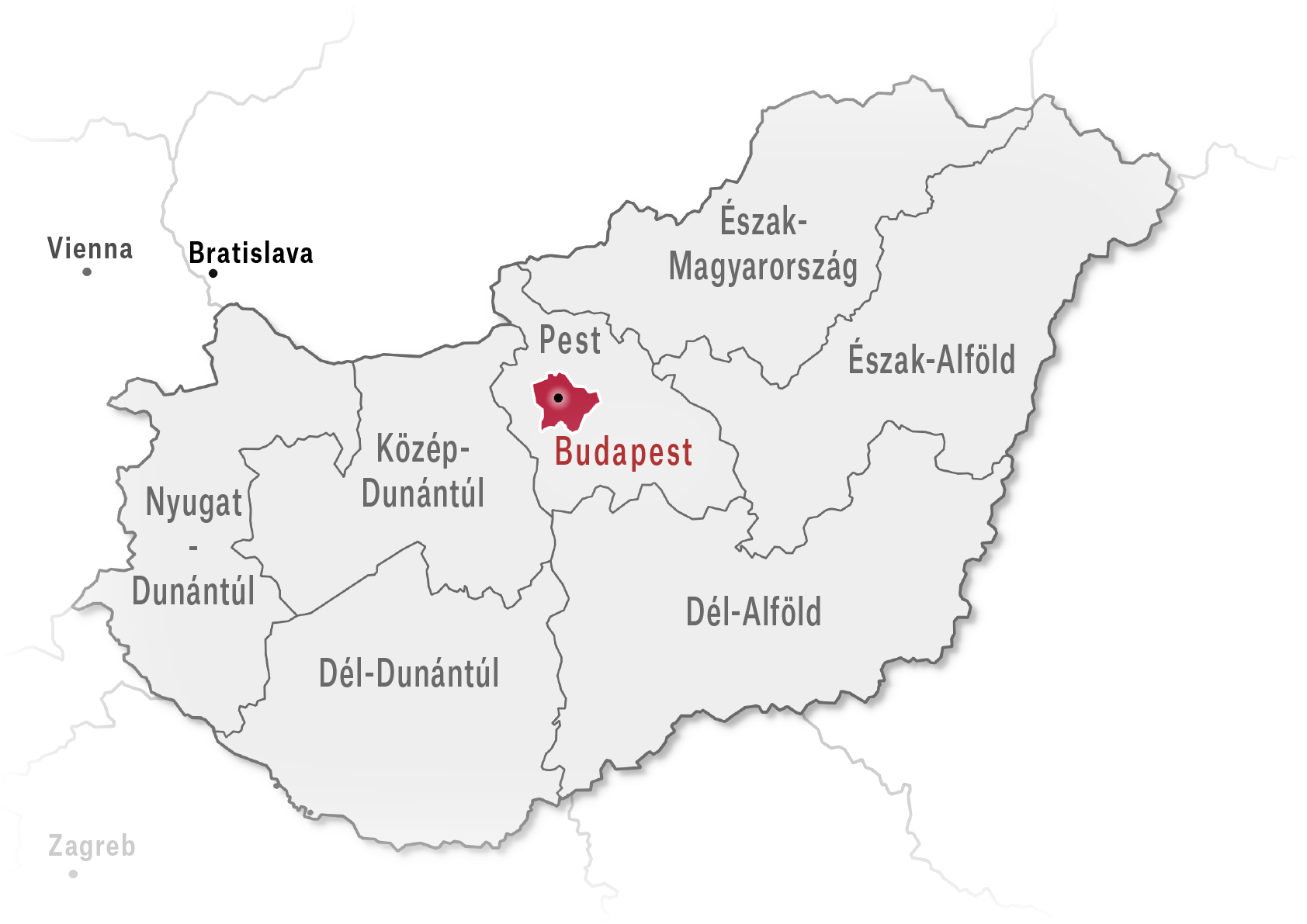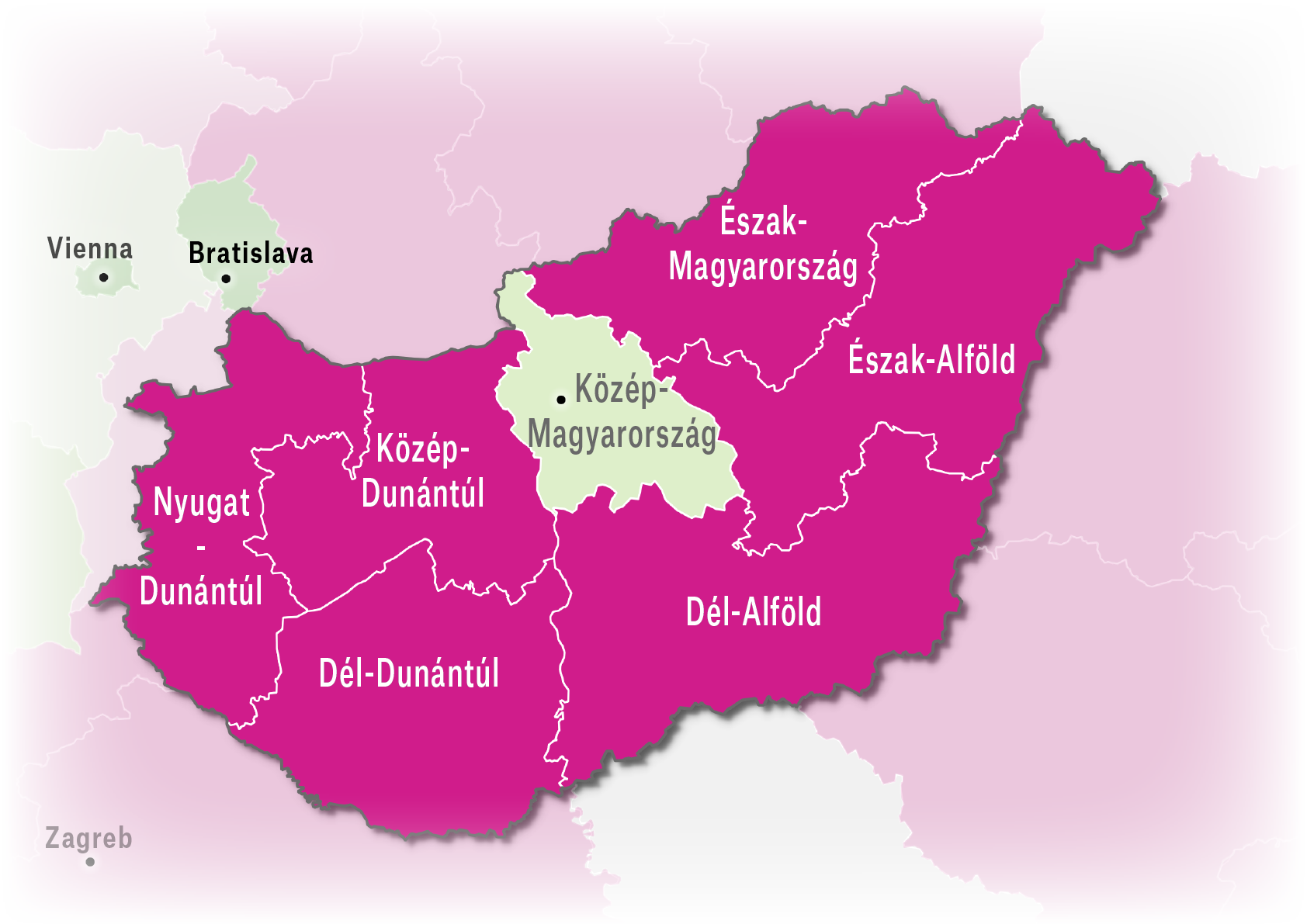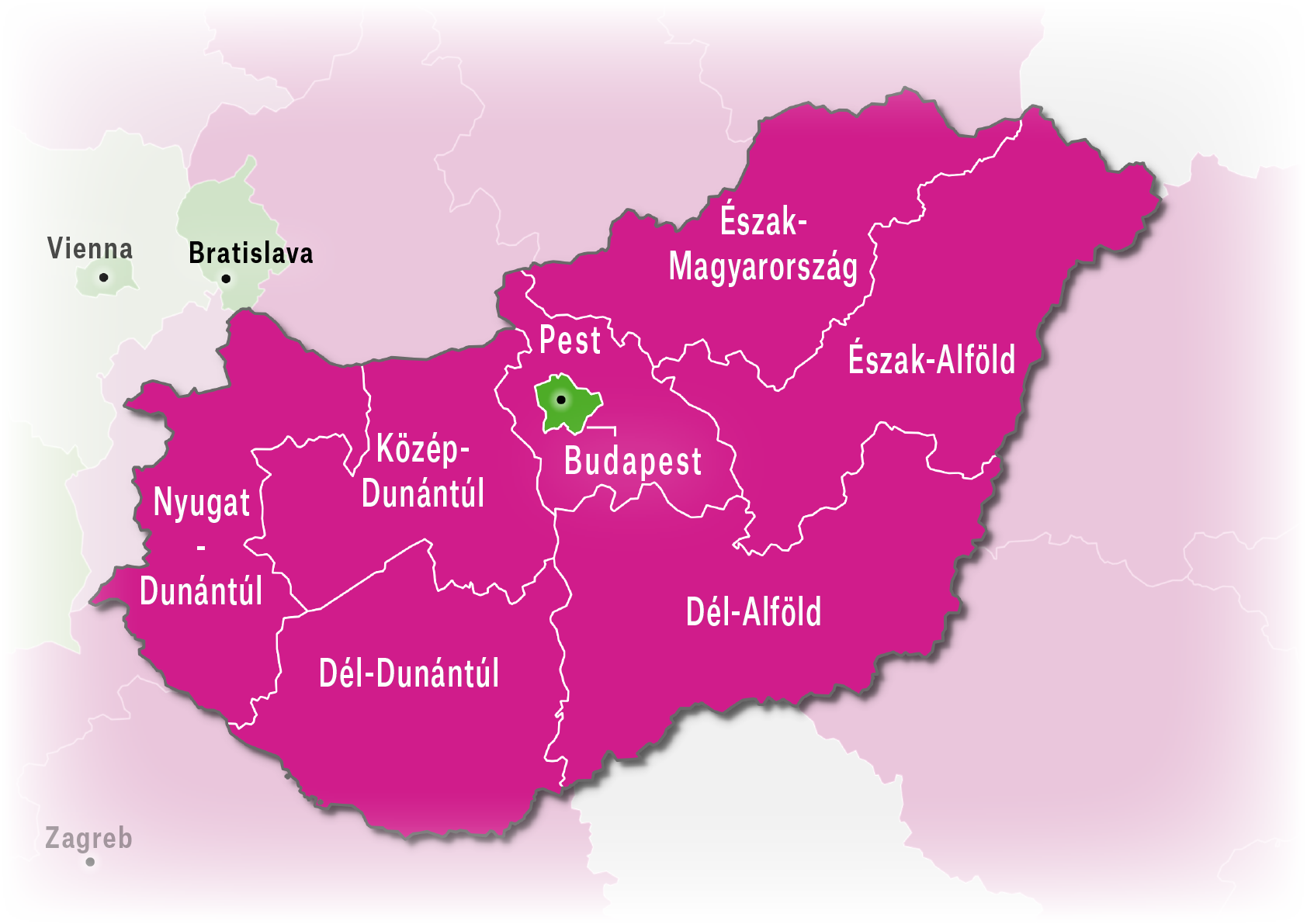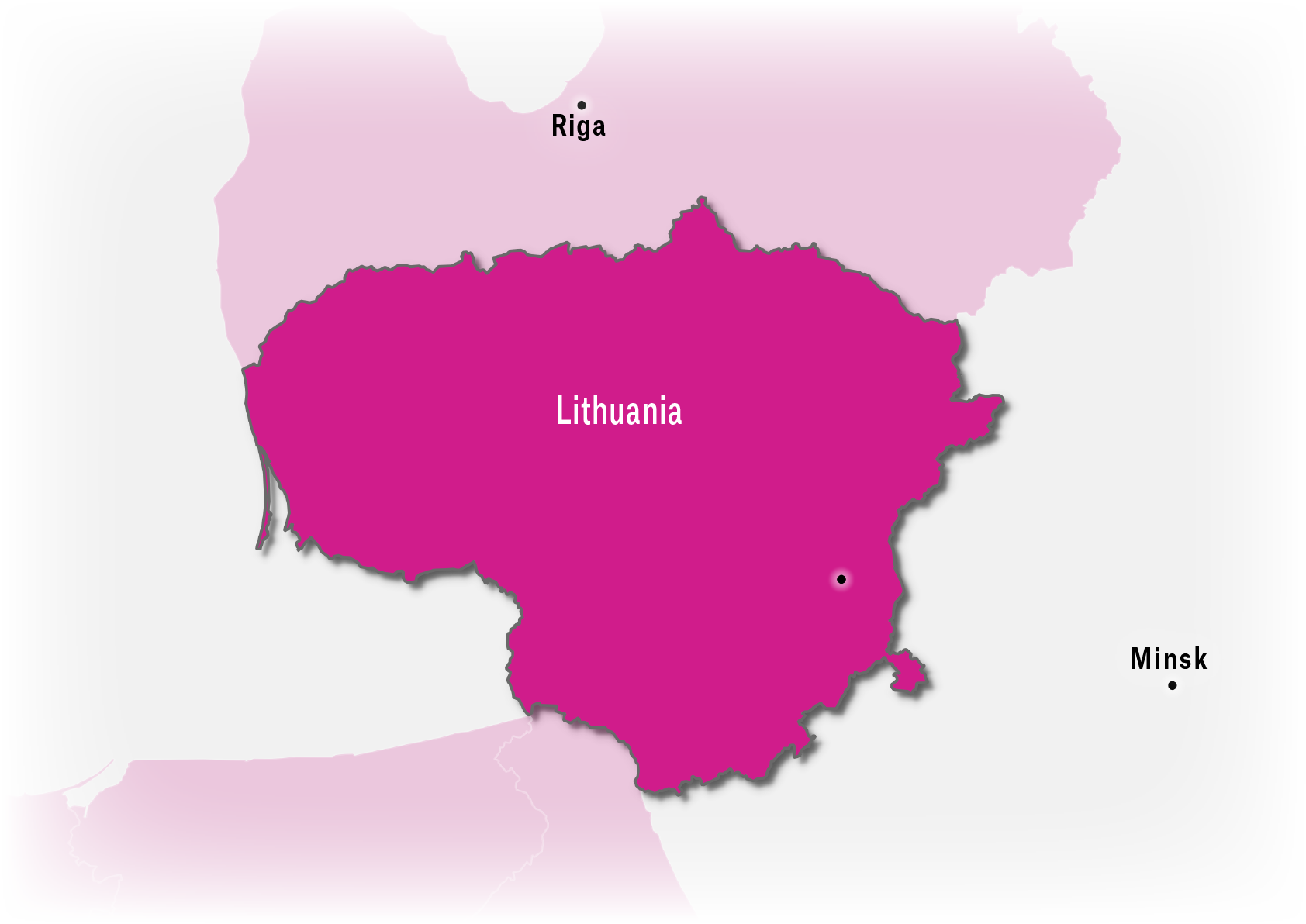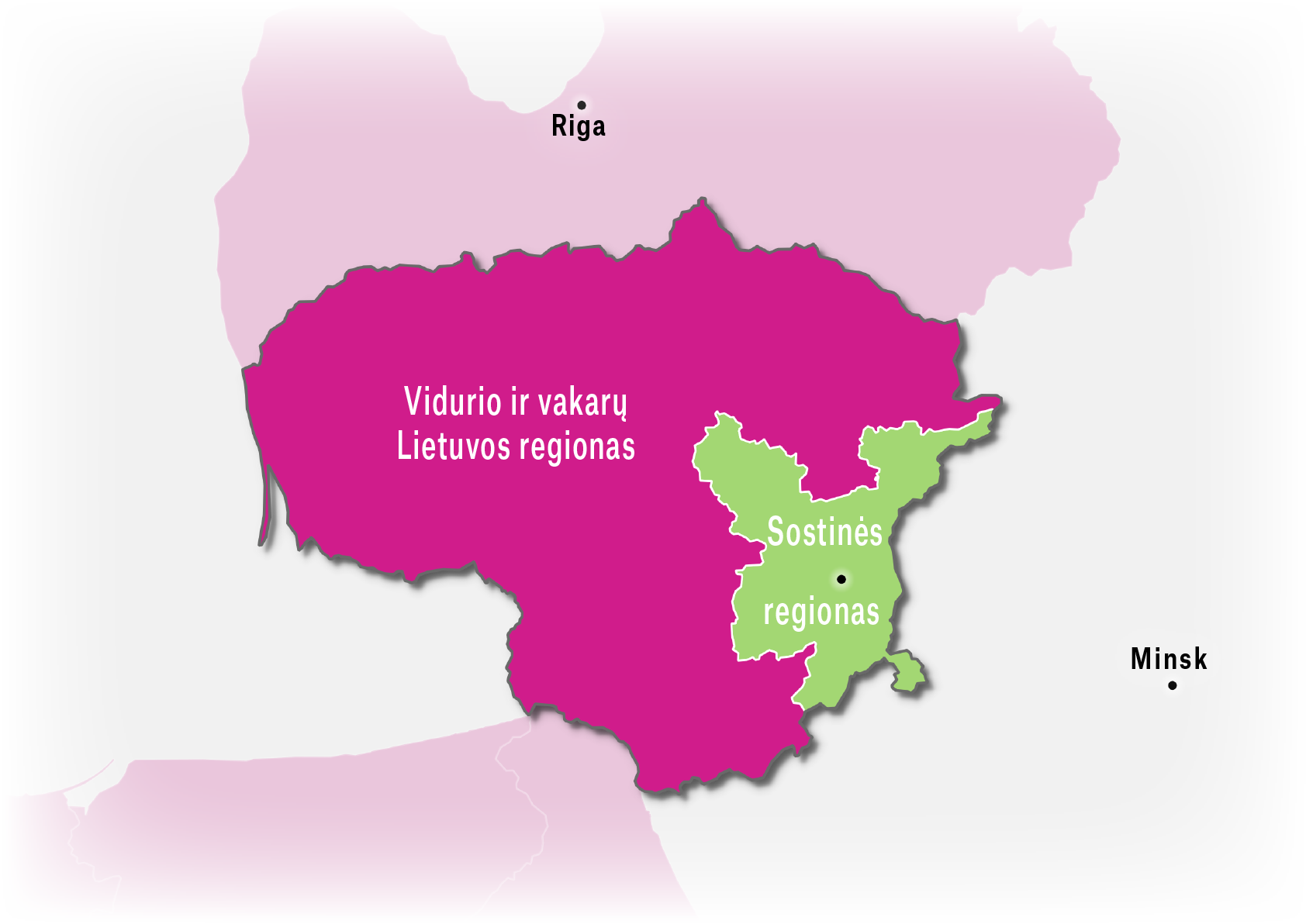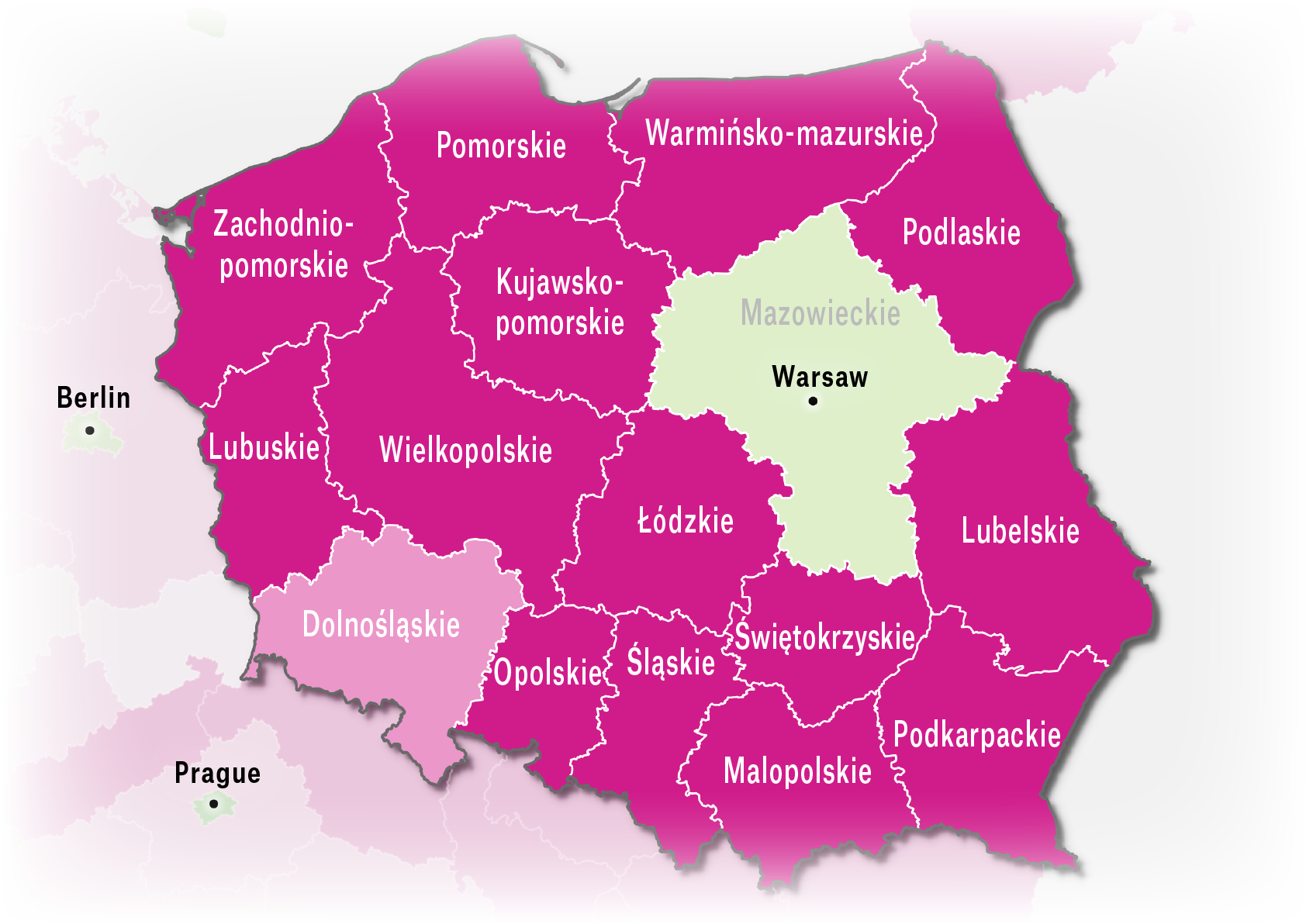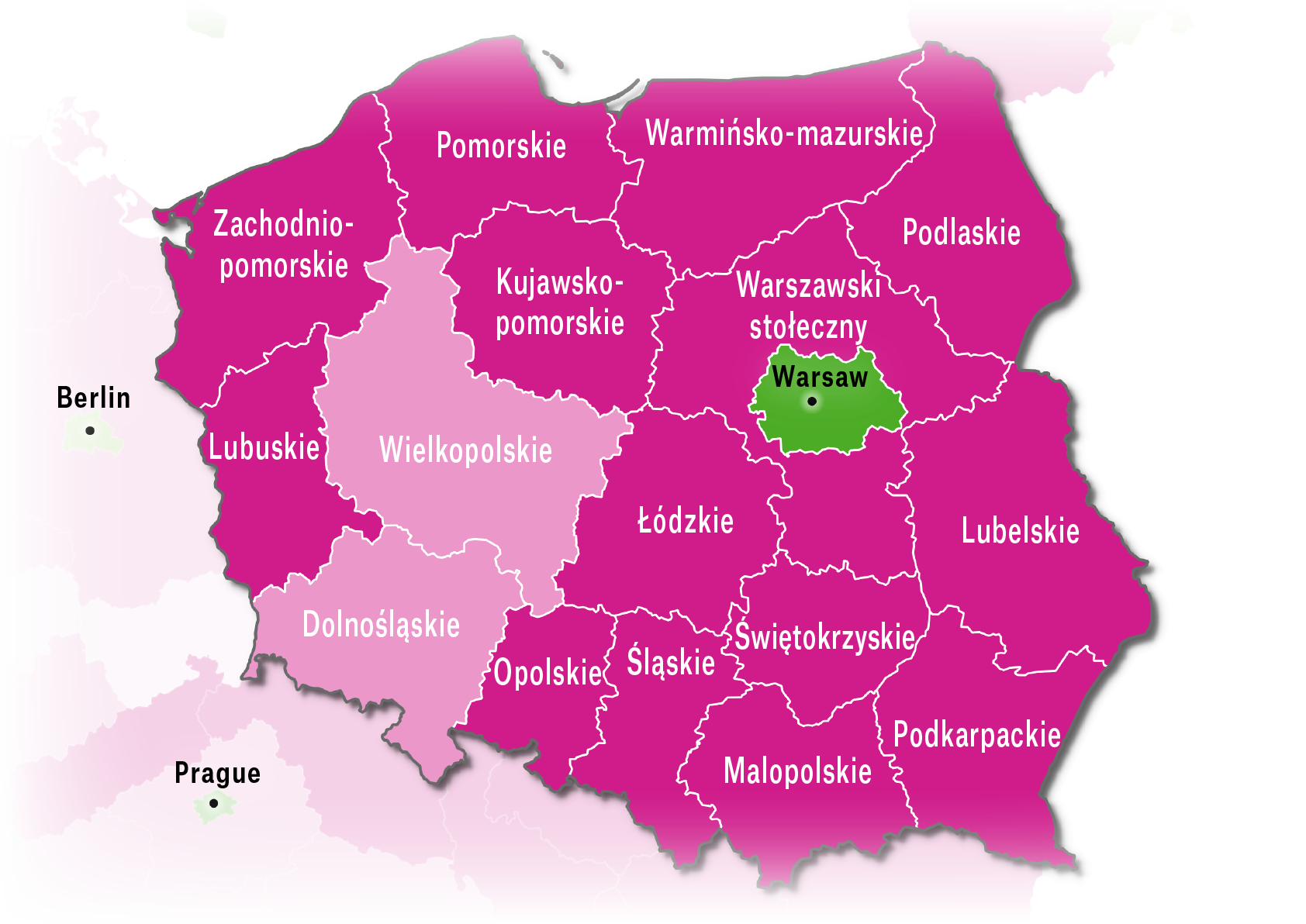If you’re familiar with the geography and economics of Europe, you might know that the more economically developed countries are situated in western and northern Europe. On the map, more developed countries are shaded in green and less developed countries are in shades of pink, denoting each country’s GDP. Each color corresponds to a threshold set by the EU, which we’ll explain in subsequent sections.
One of the European Union’s policies is to create more “cohesion,” which is jargon for economically catching up less economically developed regions to the developed ones. An easy solution would have been to funnel EU funding from developed countries to less developed ones, but even wealthy countries have less wealthy regions. Let’s see how development changes when we examine the 281 regions of the EU instead of looking at just the 28 countries on their own.
Notice the sub-country divisions: Italy (developed north, less developed south), Belgium (the same) and Germany (developed west, less developed east). There are also islands of development in regions containing country capitals (denoted by a black circle = • ): (Spain, France, UK, Poland, Romania, and Slovakia.
This regional breakdown is what the EU uses to distribute its “catch-up funds,” which is used to fund a subset of a country’s projects in transportation infrastructure, schools, and hospitals, as well as development of small firms, investments in a low-carbon economy, environmental projects, and training and education. The get a bigger share of the 50 billion euros distributed annually and, as a result, have to cofund less of total project costs. More developed regions receive less money and pay more toward project costs. Yet how does the EU decide whether a region is less developed? Where are the lines drawn?
To better understand this, we turn the map into a chart. On the chart, every
- represents a region
- represents a country average
- a region containing the country capital
The regions are ordered from left to right by their GDP.
A score of 100 represents the average GDP across all regions in the EU. A region with a score of 90 has a GDP that’s 90% of the EU average.
The region of Inner London-West is an outlier: its GDP is more than 600% of the EU average and, consequently, receives little in EU catch-up funds. Let’s zoom in so we can see more details for the other regions.
The range of regional economic development is quite high for many countries, and regions containing the country’s capital ⦿ are much more developed than others.
The 5 colors used on this chart (as well as the preceding maps) all correspond to EU funding thresholds. Regions with a GDP lower than 75% of the EU average are considered "less developed" and receive a higher allotment of the catch-up funds. In these regions, the EU pays 85% of all development project costs. Regions with a GDP between 75% and 90% have 60% of their project costs paid for by the EU. Other regions (between 90% and 100%, between 100% and 110%, between 110 and 125% or above 125% of the average) pay half of the project costs themselves.
Suppose you are the governor of a less developed region, and the EU has been funding 85% of your project costs. Also suppose your region is developing economically and increasing its GDP, and is now on the brink of receiving less EU funds. The math dictating how EU funds are distributed is not working in your favor.
